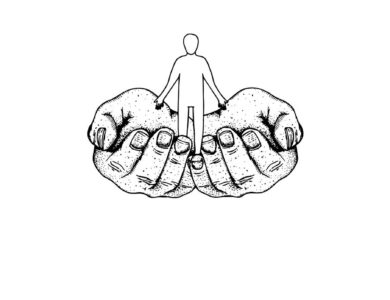The Iceberg Model: How to Uncover Hidden Motivations and Transform Your Life
Exploring the Visible vs. Hidden Layers

In the world of personal development, psychology, and organizational behavior, the Iceberg Model is a powerful tool that helps us understand how unseen elements influence our behaviors, thoughts, and interactions. Much like an iceberg, where only a small portion is visible above the waterline, most of our thoughts, emotions, and motivations lie beneath the surface. The Iceberg Model allows us to explore these hidden aspects and recognize how they shape our actions. This article delves into the key concepts of the Iceberg Model, its practical applications in both personal and professional settings, and how it can foster deeper self-awareness and understanding of others.
Current Trends, Challenges, and Opportunities
With the rise of emotional intelligence and introspective practices in modern psychology, the Iceberg Model has become a popular framework for understanding human behavior and organizational culture. However, applying it effectively can be challenging due to the complexities of the subconscious mind. Yet, for those willing to engage in self-reflection and exploration, the model offers significant opportunities to improve communication, leadership skills, and personal growth. This section examines how the Iceberg Model is being utilized today, the hurdles to its practical application, and the potential benefits it offers in various contexts.
The Layers of the Iceberg: Uncovering the Hidden Depths
- What Is the Iceberg Model? A Deeper Look
- Description: The Iceberg Model is a metaphor for understanding the complexity of human behavior. It suggests that just like an iceberg, only a small portion of our behavior and expressions is visible, while the larger part—our beliefs, values, and assumptions—lies beneath the surface.
- Example: In a workplace, an employee might exhibit stress (visible tip), but underlying this could be deeper concerns about job security, self-worth, or past experiences (submerged portion).
- Key Insight: Recognizing that much of our behavior is shaped by factors beneath the surface can help in better understanding ourselves and others, leading to more empathetic and effective interactions.
- Exploring the Visible vs. Hidden Layers
- Visible Layer: This represents the surface behaviors, actions, and spoken words that are observable to others.
- Hidden Layer: This includes deeper elements like beliefs, emotions, values, attitudes, and subconscious motivations that drive our visible actions.
- Key Insight: The hidden layer often holds the key to resolving conflicts, improving relationships, and understanding motivations, making it crucial to delve beneath the surface during self-reflection or problem-solving processes.
- Practical Applications of the Iceberg Model
- Personal Development: By using the Iceberg Model, individuals can uncover the root causes of their emotions and behaviors, leading to improved self-awareness and emotional regulation.
- Example: A person who reacts angrily during criticism might discover that their response is rooted in a fear of failure or a past experience of being judged. Understanding this deeper layer allows for healthier reactions and coping strategies.
- Organizational Culture: Leaders can apply the Iceberg Model to understand the underlying values and assumptions that shape a team’s behavior, fostering a more open and communicative workplace.
- Key Insight: By addressing both the visible and hidden layers, leaders and individuals can achieve more sustainable changes in behavior, both personally and professionally.
Challenges in Using the Iceberg Model
One of the primary challenges of applying the Iceberg Model is the difficulty of accessing deeper, often subconscious thoughts and feelings. It requires time, patience, and a willingness to confront potentially uncomfortable truths. Moreover, in professional settings, discussing hidden beliefs and emotions can be sensitive, making it essential to create a safe environment for open dialogue. Despite these challenges, the benefits of using the Iceberg Model—such as improved self-awareness and communication—make it a valuable tool for personal and organizational growth.
Opportunities for Deeper Self-Reflection
The Iceberg Model encourages a shift from simply observing behavior to understanding the “why” behind it. This approach can foster greater empathy, improve conflict resolution, and lead to more authentic connections with others. In therapeutic or coaching settings, it can help clients identify the underlying beliefs that drive their actions, enabling more targeted and effective interventions.
Conclusion
The Iceberg Model offers a profound way to explore the deeper layers of the human mind and behavior. By recognizing that what we see is often just the tip of the iceberg, we can develop a more holistic understanding of ourselves and those around us. Whether applied in personal development, leadership, or therapy, the model provides a path to uncovering hidden motivations and achieving greater self-awareness. Embracing this deeper perspective can lead to more meaningful interactions and a richer understanding of the world.
Call to Action: Have you ever explored the hidden layers beneath your own behavior? How has understanding your subconscious motivations impacted your interactions with others? Share your experiences and start a conversation on the power of the Iceberg Model.




